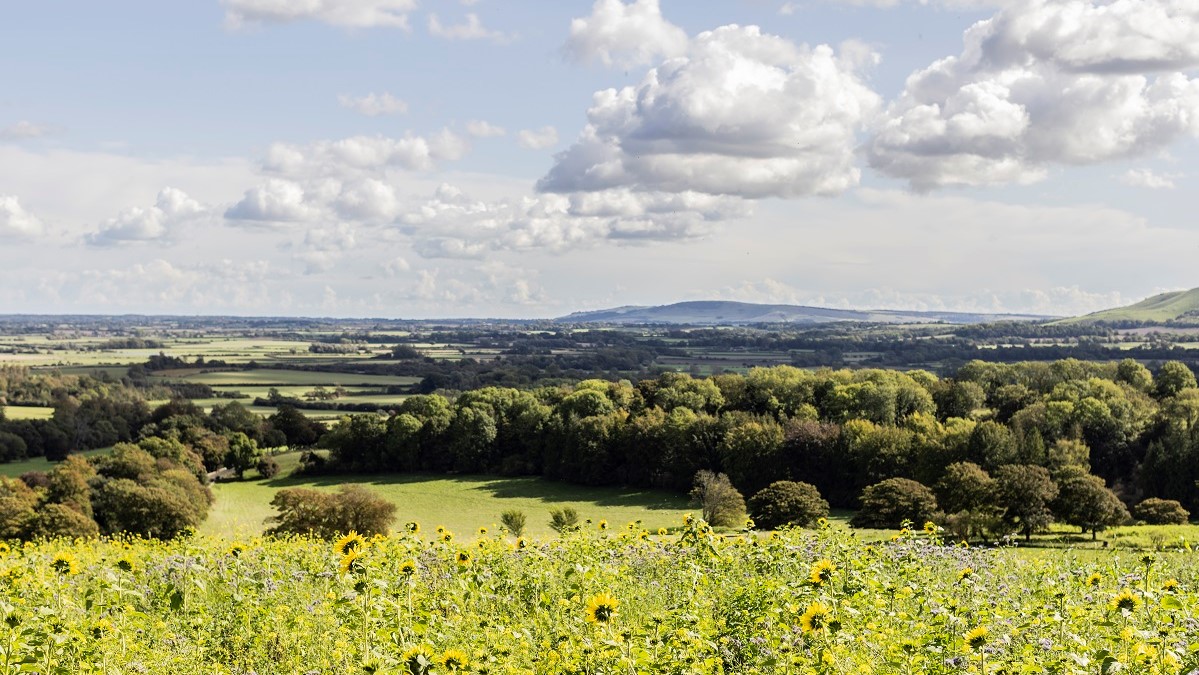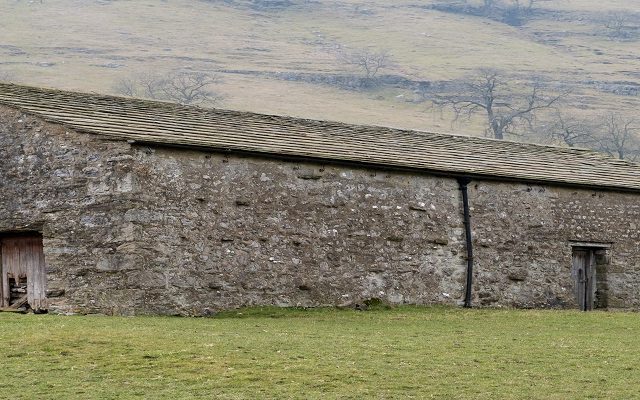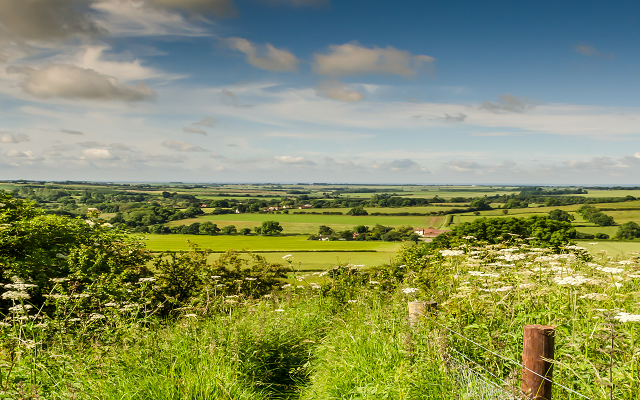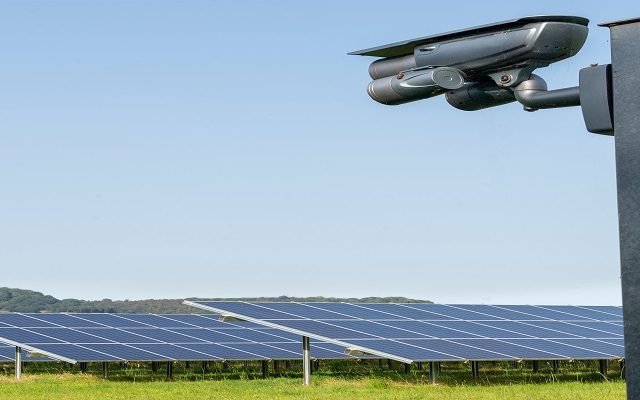Case study: Backstage at Glyndebourne
Glyndebourne is best known for its iconic opera house, but the Sussex estate is also at the forefront of work to improve environmental sustainability and nature recovery
Even at quiet times of the year Glyndebourne feels alive.
We time our visit with a short lull between the end of the busy Summer Festival programme and the start of rehearsals for the Autumn schedule. But there is still an undercurrent of activity around the theatre, house and gardens, deep in picturesque rural Sussex.
‘The Festival is our crazy-busy time,’ says Gus Christie, who is executive chairman of Glyndebourne opera – which operates as a charity – as well as running the wider 3,000-acre estate.
‘We stage six separate operas over three-and-a-half months. But it’s very much a year-round operation. We already have the designs in for next season’s productions, so our technical team can start work on costumes and wigs, plus there are always repairs and maintenance to do.’
Glyndebourne Estate has been in the Christie family for 200 years, but it was Gus’s grandparents – John Christie and Audrey Mildmay – whose shared passion for music led to them opening the first Festival in 1934. They passed the baton to their son, Sir George, who with the help of his wife Lady Christie, is credited with taking Glyndebourne into the modern age when he built the current 1,250-seater theatre in the 1990s. Gus took the reins in 2000.
While the original idea of establishing an opera house in the middle of the countryside might have seemed sufficiently outlandish to have almost passed as a story in a stage production, it worked. It is regarded as one of the most respected such venues in the world, beloved by performers, creators, as well as the millions who have sat, rapt, in its auditorium.
LOCAL EMPLOYMENT
More than 90,000 tickets were sold during the 2023 summer season alone, with the influx of visitors generating an estimated £20 million a year for the local economy. Glyndebourne is now the second biggest opera house in the UK in terms of performances, second only to London’s Royal Opera House.
It takes an army of 180 permanent staff to deliver such an ambitious programme and keep Glyndebourne visitor-ready. Some work out of the state-of-the-art production hub, which is home to the props, carpentry, costume, makeup and wig departments. In addition, there are teams focused on maintenance, fundraising and development, marketing and communications, and learning and engagement.
As much as possible is handled on site. When bigger productions are staged, the number of people working can swell to 600, making it the biggest local employer in the area. ‘It’s like a village,’ explains Gus. ’We even have our own post box.’
ICONIC TURBINE
One of the first clues visitors get that they are approaching this ‘village’ is the 67m-high wind turbine on a hillside just a few hundred metres away from the house. As someone with a lifelong passion for the environment and nature – he studied zoology at university and spent his early career as a natural history cameraman – Gus has long-since been aware of issues of climate change and global warming. It was, therefore, a priority when he took the helm that he should reduce carbon emissions as much as possible. In 2005 he decided to seek permission for a wind turbine to power the house, auditorium and outbuildings. This was the first in a series of moves to put environmental sustainability at the heart of Glyndebourne’s strategy.
It took seven years to get permission for the turbine, with the process culminating in a week-long public inquiry. Fortunately, the independent planning inspector agreed with Glyndebourne’s view that the benefits of reducing its carbon emissions by 50% outweighed any negative visual impact of putting up one turbine. Gus himself sees only beauty. ‘It’s like a work of art on the hill,’ he says.
It has also proved to be a prudent investment. The turbine paid for itself within six years and has saved an estimated £1m in terms of electricity costs in the past 12 months. Over the course of a year, it technically produces enough power to cover all of Glyndebourne’s needs, although it does have to import power from the grid in the summer and export it during the winter
The success of the turbine has kickstarted a process which is now embedded in decision-making at every level. Glyndebourne has set itself a target of halving its emissions by 2030 and reaching net zero by 2050. Every single department has an environmental champion who generates ideas as to how the opera can cut emissions by reducing waste and improving energy efficiency.
As a result of this commitment, it has implemented a ban on disposable coffee cups, introduced cork recycling, increased use of LED lighting, and more than 30 electric vehicle charging points have been installed. The team is also in the process of changing all the windows in the buildings around the auditorium, ‘built before climate change was an issue’, to double glazing, plus exploring the possibility of adding solar panels to some of the buildings around the venue.
THE WIDER LANDSCAPE
Alongside its artistic and environmental commitments in the opera world, the Christie family has always taken its responsibilities at a local level incredibly seriously. Most of the farmland is let to two different families who have been on the estate for generations. There is also a property portfolio of 60 houses, many of them located in the village of Ringmer, and a handful of commercial properties.
And it’s assisting Gus with the management of the wider estate and helping spot new opportunities where Strutt & Parker plays its part. ‘It is a joy to work with Gus as his ethos is very much about protecting and supporting the environment and people,’ says Kathryn Donkin, from the Strutt & Parker Land Business Land Management team at Strutt & Parker’s Lewes office.
‘He is someone who has a vision for the estate being sustainable and as green as possible – not just for the benefit of future generations of his family, but also for the local community.’
The estate is taking a proactive approach with the maintenance of its property portfolio. Kathryn, working with Strutt & Parker surveyor James Harvey, has recently overseen an extensive refurbishment of a property which was the home of Gus’s late parents. As cottages become available, before they are re-let to tenants, the team looks closely at what can be done to improve their energy performance. Meanwhile, a public consultation has recently been launched for a solar farm application on the estate which would produce enough renewable electricity to power 6,000 homes.
For Gus, one of the most exciting projects in the pipeline is a proposal to focus on landscape regeneration on a block of 300 acres of low-lying, wet and low-yielding farmland. The plan is still in its infancy, but the vision is to create three different types of habitat: marshland, woodland and an area of grassland and meadow. This could involve the introduction of livestock to help manage the vegetation, alongside beavers which can play a positive role in enhancing wetlands.
‘I think it is important to keep one’s good land for food production and to keep your more marginal land for nature,’ says Gus. ‘One’s role is as caretaker of an estate, but to leave it in a better state than one found it. I do remember there being lots more nature around when I was a child, so I would like to be a part of reversing that loss.’
BRAND VALUES
The landscape regeneration project taps into his own passion for the environment, but Gus also recognises its value for the Glyndebourne brand. Given the next generation of opera-goers will be more focused on being sustainable and green than their predecessors, they are likely to have high expectations of the organisations and institutions they engage with. In time, it may be possible for people attending the opera to also stay on the estate and see the project first-hand. ‘We would like there to be some sort of access, as it would be nice to share it. Although one obviously has to be careful about how you do that, if the wildlife is to thrive.’
The woodland has required close management in recent years, with Ash dieback reaching this part of Sussex. But applying the principles of the circular economy, any trees which are cut down are used to feed the woodchip boiler that heats Glyndebourne House where Gus lives with his wife, the international soprano Danielle de Niese, and their two children.
For Rhodri Thomas, Strutt & Parker’s Head of Rural, Glyndebourne is leading the way in terms of delivering economic, environmental and social value.
‘It is rolling out exciting new business initiatives, but always with an eye on its commitment to improving environmental performance. In a world where change is all around us, Glyndebourne could not be more avant-garde about the way it is approaching the future, while protecting the legacy of the past.’
Perhaps it is this unique fusion of the past and future that makes this place so special, so alive. One thing’s for sure: in the story of this estate, there are many more exciting acts to come.
For more information contact Kathryn Donkin or Rhodri Thomas. This article first appeared in our latest issue of Land Business. For more download the Autumn/Winter 23 edition of Land Business.






